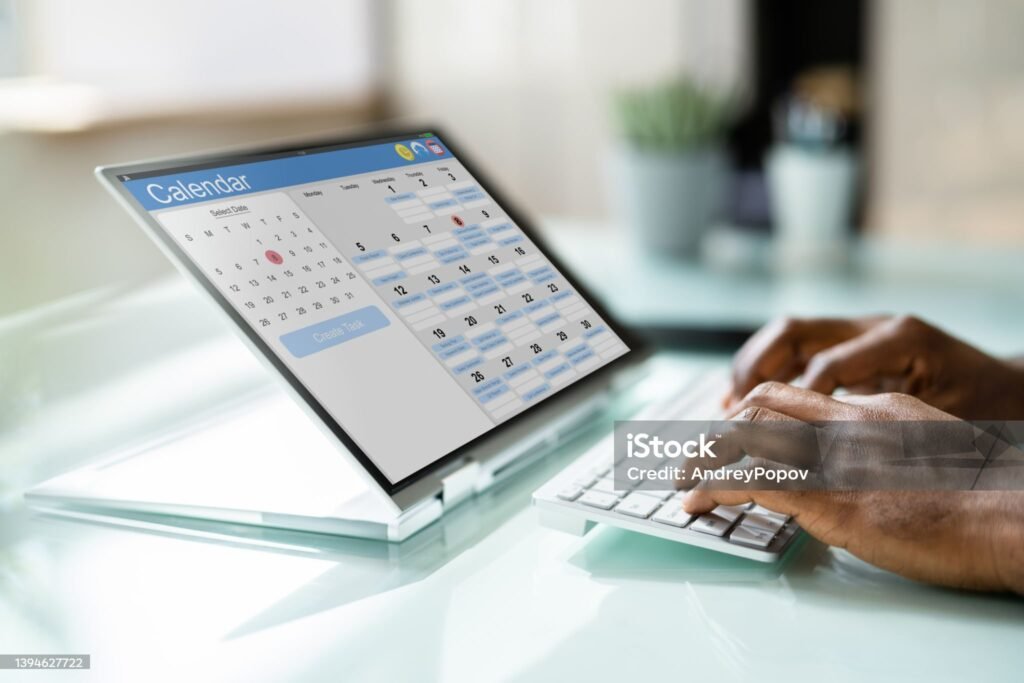Welcome to our comprehensive analysis of two popular email marketing tools: Constant Contact and SalesHandy. In today’s digital marketing landscape, choosing the right tool can significantly impact your outreach and engagement strategies. This article aims to dissect and compare these platforms in a straightforward, conversational manner. Let’s dive into the first critical area of comparison
User Interface and Ease of Use
Constant Contact
Constant Contact has established itself as a user-friendly platform, ideal for those stepping into the world of email marketing. Its interface is designed to be intuitive, making navigation a breeze for new users. As soon as you log in, you’re greeted with a clear and well-organized dashboard. This simplicity extends to its email campaign creation process. The drag-and-drop editor is a standout feature, allowing anyone, regardless of technical prowess, to create professional-looking emails.
Additionally, Constant Contact offers a wide array of pre-designed templates that cater to various industries and occasions. This reduces the time and effort required to create emails from scratch, especially beneficial for small businesses or solo entrepreneurs who may not have dedicated design resources.
SalesHandy
SalesHandy, while also focusing on user experience, gears its platform towards sales professionals and teams. The interface is clean and functional but comes with a slightly steeper learning curve compared to Constant Contact. It’s packed with features that cater to sales-oriented email campaigns, like email tracking, auto follow-ups, and detailed analytics.
The platform excels in providing tools that facilitate personalized communication at scale, which can be incredibly beneficial for sales teams looking to streamline their email outreach. However, for users who are new to such tools, there might be an initial period of adjustment to fully utilize the platform’s capabilities.
Navigating the Platforms
Navigating an email marketing platform is a critical aspect of the user experience, influencing how quickly and effectively one can execute marketing strategies. Constant Contact and SalesHandy, each with their unique interface designs, cater to different user preferences and levels of technical proficiency.
Constant Contact has built its platform with a focus on intuitiveness and ease of use. This approach is evident in its clean and well-organized dashboard, which guides users seamlessly through various functionalities. The interface is designed to be straightforward, minimizing the learning curve for new users. This simplicity is particularly beneficial for small business owners, marketers, and individuals who may not have extensive experience with email marketing tools. Constant Contact’s design ensures that key features like creating a campaign, managing contacts, and analyzing reports are easily accessible, enabling users to quickly become proficient in using the platform. The emphasis on a hassle-free navigation experience makes Constant Contact a preferred choice for those who value efficiency and simplicity in their marketing tools.
On the other hand, SalesHandy, while maintaining a functional interface, offers a more nuanced experience tailored to sales professionals. The platform is designed to accommodate a suite of advanced features essential for sales-focused email campaigns. As such, the interface presents a comprehensive set of tools that, while highly effective, may require some initial acclimatization. Users of SalesHandy are typically those who are comfortable with a bit more complexity in exchange for detailed control over their campaigns. The platform is structured to facilitate easy access to advanced functionalities like email tracking, automated follow-ups, and detailed analytics. For users familiar with such features, navigating the SalesHandy platform becomes intuitive over time, allowing them to leverage its full potential for optimizing sales strategies.
In essence, the navigation experience of both Constant Contact and SalesHandy reflects their respective focuses and target audiences. Constant Contact offers an uncomplicated and user-friendly interface, making it ideal for those who prefer a straightforward approach to email marketing. In contrast, SalesHandy provides a more detailed interface with advanced functionalities, catering to users who require in-depth control over their sales-oriented email campaigns.
Features and Functionalities
Constant Contact
Constant Contact is not just about a friendly interface; it also packs a punch with its array of features. The platform covers a broad spectrum of email marketing needs, from creating and sending emails to managing contacts and analyzing campaign performance. It includes a variety of templates, social media integration, and basic automation features, such as autoresponders and triggered emails based on subscriber actions.
What sets Constant Contact apart is its focus on providing tools that are both powerful and accessible. For instance, its email editor is not only easy to use but also versatile enough to create visually appealing emails. Additionally, the platform offers unique features like event management and donation collection, which are particularly useful for nonprofits and community organizations.
SalesHandy
SalesHandy, as its name suggests, is designed with sales teams in mind. It offers features that go beyond standard email marketing functionalities. Key offerings include email tracking, which notifies you when a recipient opens your email, and automated follow-ups, ensuring that your leads are nurtured without manual intervention.
The platform excels in its ability to provide detailed analytics on email engagement, which is invaluable for sales teams. SalesHandy’s strength lies in enabling users to make data-driven decisions to optimize their sales strategies. It also allows for email scheduling and team collaboration, features that are essential for coordinating sales campaigns.
Pricing
Constant Contact
- Email Plan: Starting at $20/month based on the number of contacts. Includes email marketing, customizable templates, and reporting.
- Email Plus Plan: Starting at $45/month based on contacts, including additional features like automated email series, online donations, and surveys & polls.
SalesHandy
- Free Plan: Basic features including email tracking and scheduling.
- Regular Plan: Priced at $9 per user per month, offering unlimited email tracking and templates, and mail merge features.
- Plus Plan: At $22 per user per month, includes advanced features like team reports, team templates, and document tracking.
- Enterprise Plan: At $49 per user per month, adding features like dedicated account manager and custom integration.
Tailoring to Specific Needs
The diverse range of features offered by Constant Contact and SalesHandy highlights their unique approaches to email marketing, each tailored to meet specific needs and preferences.
Constant Contact has positioned itself as a versatile and user-friendly platform, ideal for a wide array of marketing needs. It appeals to small and medium-sized businesses, nonprofits, and individual entrepreneurs who are looking for an all-encompassing email marketing solution. The platform’s strength lies in its ability to provide a comprehensive set of tools that are both powerful and accessible. This includes a variety of customizable templates, easy-to-use email creation tools, efficient contact management, and basic but effective automation features. Furthermore, Constant Contact enhances its utility with unique functionalities like event management and donation collection, broadening its appeal to organizations with diverse marketing goals. The platform ensures that even those with minimal marketing experience can execute effective campaigns, making it a popular choice for users who value simplicity and effectiveness.
In contrast, SalesHandy caters more specifically to sales professionals and teams. It recognizes the unique requirements of sales-oriented email campaigns and offers features that align with these needs. SalesHandy is particularly adept at providing tools that enhance sales processes, such as email tracking, automated follow-ups based on recipient engagement, and detailed analytics that offer insights into email performance. These features are invaluable for users focused on sales efficiency, lead management, and data-driven strategies. The platform’s ability to provide detailed information on recipient interactions makes it a powerful tool for sales teams looking to optimize their outreach and follow-up processes. SalesHandy’s focus on sales-related functionalities makes it an ideal choice for businesses and professionals whose primary aim is to streamline and enhance their sales communication strategies.
In essence, while both Constant Contact and SalesHandy offer robust email marketing capabilities, they cater to different audiences with distinct needs. Constant Contact is a great option for a broad range of users seeking an easy-to-use, comprehensive email marketing tool. SalesHandy, however, is more specialized, targeting sales teams and professionals in need of advanced sales-focused features.

Related: Check out our free SEO suite

Automation and Segmentation
Constant Contact
Automation in email marketing is crucial for saving time and enhancing efficiency, and Constant Contact understands this well. It offers basic automation features that are incredibly user-friendly. You can set up automated welcome emails, trigger emails based on subscriber activities, and send out birthday or anniversary messages automatically. While the automation capabilities might not be as advanced as other platforms, they are more than sufficient for most standard email marketing needs.
Segmentation in Constant Contact is straightforward yet effective. Users can segment their contact lists based on criteria like demographics, past interactions, or engagement levels. This functionality allows for targeted and personalized communication, which is key to increasing open rates and engagement.
SalesHandy
SalesHandy steps up the game in automation, especially for sales-focused activities. The platform allows users to automate follow-up emails based on recipient actions, a feature that is invaluable for sales teams. This level of automation ensures that potential leads are nurtured consistently and efficiently.
In terms of segmentation, SalesHandy provides tools that are more aligned with sales processes. The platform enables users to segment contacts based on their interaction with previous emails, which is crucial for tailoring follow-up strategies and understanding lead behavior.
Enhancing Efficiency and Personalization
In the competitive landscape of email marketing, the dual goals of enhancing efficiency and personalizing communication are paramount. Constant Contact and SalesHandy, with their distinctive features, offer unique approaches to achieving these goals.
Constant Contact’s automation tools are designed to streamline the email marketing process, making it more efficient, especially for users who may not have extensive marketing teams. Its automation capabilities, while basic compared to more advanced platforms, are incredibly effective for routine tasks. Features like automated welcome emails and triggered emails based on subscriber actions help maintain consistent communication with minimal manual intervention. This level of automation is particularly beneficial for small to medium-sized businesses that aim to build and maintain customer relationships without the resources for constant hands-on management.
The platform also offers practical segmentation tools, allowing businesses to categorize their audiences into distinct groups based on simple yet relevant criteria. This segmentation capability, although not overly complex, is sufficient for personalizing emails in a way that makes them more relevant and engaging to different segments of the audience. By tailoring content to meet the specific interests and needs of each segment, businesses can enhance engagement and foster a deeper connection with their subscribers.
SalesHandy, on the other hand, takes a more nuanced approach, particularly suited to sales-oriented email campaigns. Its advanced automation features enable sales teams to set up sophisticated, behavior-triggered email sequences. This not only saves time but also ensures that potential leads are nurtured systematically and efficiently. The ability to automate follow-up emails based on recipient interactions is a game-changer, significantly increasing the chances of conversions while reducing the workload on sales personnel.
In terms of personalization, SalesHandy excels with its detailed segmentation capabilities. Users can segment their audience based on intricate behavioral data, ensuring that each email is as relevant as possible to its recipient. This depth of personalization is key in sales contexts, where understanding and responding to individual customer behaviors can dramatically impact the effectiveness of the communication.
Conclusion
Constant Contact emerges as a robust and user-friendly platform, ideal for small to medium-sized businesses, non-profits, and individuals stepping into the world of email marketing. Its strength lies in its simplicity, ease of use, and a suite of features that cover the essential aspects of email marketing effectively. From intuitive campaign creation tools and basic automation to straightforward segmentation capabilities, Constant Contact is designed to make email marketing accessible and efficient for everyone.
SalesHandy, tailored more towards sales professionals and teams, offers advanced features that cater specifically to sales-oriented communication and strategies. With its sophisticated email tracking, detailed analytics, and advanced automation and segmentation capabilities, SalesHandy stands out as a powerful tool for those looking to enhance their sales processes. It is particularly suited for users who require a deeper level of control and personalization in their email outreach.
Read Next:
- Measuring User Engagement through Time on Page with SEO Analytic
- Utilizing SEO Analytics to Optimize Startup Mobile-Friendly Design
- Startup Guide to Identifying Crawl Errors in Google Search Console
- SEO Analytics Startup Influencer Marketing: Tracking Impact
- Utilizing A/B Testing with SEO Analytics for Startup Optimization






















Comments are closed.